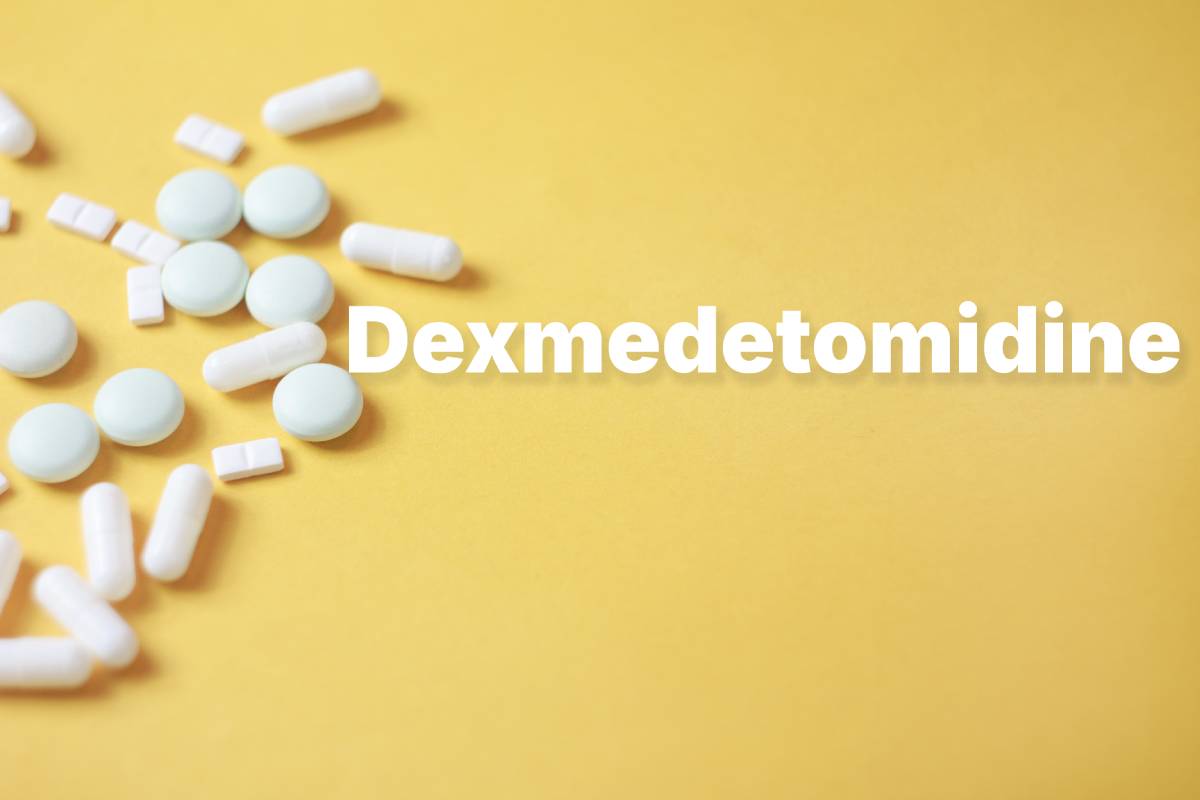Administration Route for Dexmedetomidine

Dexmedetomidine, a potent and selective α2-adrenergic receptor agonist, is a pivotal sedative agent with many applications in modern clinical practice due to its unique pharmacological profile. Dexmedetomidine is found in several forms, and the choice of administration route depends on the specific procedural circumstances.
Initially developed in the 1990s through a collaboration between Orion Pharma in Finland and Abbott Laboratories in the United States, dexmedetomidine transitioned from veterinary use to human medicine after demonstrating efficacy in reducing sympathetic nervous system activity without suppressing respiratory function. The Food and Drug Administration (FDA) first approved dexmedetomidine in 1999 for short-term sedation of mechanically ventilated patients in intensive care units (ICUs). Over time, its applications expanded to include procedural sedation and pediatric use, with subsequent approvals in 2008 and 2013, respectively. The drug’s mechanism of action—activating central α2 receptors in the brain and spinal cord—provides a calming effect, making it a safer alternative to traditional sedatives like benzodiazepines or opioids, which carry higher risks of respiratory depression.
Clinically, dexmedetomidine (marketed under the brand name Precedex) is primarily used for sedation in mechanically ventilated ICU patients and for non-intubated procedures requiring moderate to deep sedation. Beyond these approved indications, it has gained traction in off-label roles such as managing pediatric anxiety before surgery, reducing postoperative shivering, and alleviating agitation in palliative care settings. Its neuroprotective and cardioprotective properties are also under investigation, though these applications remain experimental. The drug’s versatility is further highlighted by its ability to synergize with other analgesics, reducing opioid requirements and minimizing side effects associated with polypharmacy.
The administration route for dexmedetomidine varies based on clinical context and patient needs. The intravenous (IV) route remains the most common method, favored for its rapid onset (5–10 minutes) and precise titratability. A typical IV regimen involves a loading dose of 1 µg/kg infused over 10–20 minutes, followed by a maintenance infusion ranging from 0.2 to 0.7 µg/kg/hour. This route is standard in ICUs and operating rooms but requires careful hemodynamic monitoring due to risks of hypotension and bradycardia. Intramuscular (IM) administration, typically at 2.5 µg/kg, offers a practical alternative for preoperative sedation, particularly in pediatric or uncooperative patients. Onset of action is typically longer when Precedex is administered IM, with effects emerging within 15–30 minutes. Intranasal delivery (1–2 µg/kg) has gained traction for pediatric preoperative anxiolysis, leveraging its non-invasive nature and 40–65% bioavailability. However, intranasal administration may lead to nasal irritation.
Less conventional routes include sublingual administration, which provides slower absorption (peak plasma levels at 60–120 minutes) and is suitable for cooperative patients requiring prolonged mild sedation. Neuraxial administration, such as epidural or spinal routes, enhances regional anesthesia by prolonging analgesic effects, though it carries risks of hypotension and urinary retention. Subcutaneous (SC) injection is an emerging option for patients lacking IV access, achieving therapeutic plasma levels within 15 minutes and maintaining sedation for up to 4 hours. Each route presents distinct pharmacokinetic profiles: IV offers 100% bioavailability, while IM and intranasal routes exhibit 73–93% and 40–65% bioavailability, respectively.
The choice of administration route for dexmedetomidine must balance speed, duration, and patient-specific factors. IV infusion dominates critical care due to its controllability, whereas non-IV routes are increasingly adopted in pediatrics, resource-limited settings, or specialized procedural contexts. Risks also vary by method. IV administration is associated with dose-dependent cardiovascular effects, including hypotension (28% of cases) and bradycardia (12%), particularly with rapid boluses. IM and SC routes may cause localized pain or erythema at injection sites, while intranasal use risks mucosal irritation. Neuraxial administration demands vigilance for systemic hypotension and urinary retention. Across all routes, prolonged use beyond 24 hours raises concerns about tolerance and tachyphylaxis.
Despite these risks, dexmedetomidine’s safety profile remains favorable compared to traditional sedatives, especially in populations vulnerable to respiratory compromise. Ongoing research continues to explore novel delivery methods, such as transdermal patches or inhaled formulations, which could further broaden its therapeutic scope. As clinical experience grows, dexmedetomidine is poised to remain a cornerstone of balanced sedation strategies, particularly in settings requiring awake cooperation, hemodynamic stability, or minimized respiratory impact.
References
- Weidner L, Riera KM, Schäfer C, et al. Dexmedetomidine: a magic bullet on its way into palliative care—a narrative review. Ann Palliat Med. 2022;11(4). doi: 10.21037/apm-21-1989.
- Zhang X, Wang R, Lu X, et al. Mechanisms of dexmedetomidine in neuropathic pain. Front Neurosci. 2020;14:330. doi: 10.3389/fnins.2020.00330.
- Shah S, Sanghavi A. An introduction to the various role of dexmedetomidine. J Clin Diagn Res. 2016;10(11):UE01-UE04. doi: 10.4103/0970-9185.195356.
- Shah S, Sanghavi A. Dexmedetomidine in current anaesthesia practice—a review. J Clin Diagn Res. 2014;8(10):GE01-GE04. doi: 10.4103/0019-5049.143428.
- Piao G, Wu J. Clinical adverse events to dexmedetomidine: a real-world drug safety study. Front Pharmacol. 2024;15:1365706. doi: 10.3389/fphar.2024.1365706.
- U.S. Food and Drug Administration. Precedex (dexmedetomidine) safety and drug utilization review. FDA. 2016. Accessed March 18, 2025. https://www.fda.gov/files/advisory%20committees/published/PRECEDEX-Safety-and-Drug-Utilization-Review.pdf.
